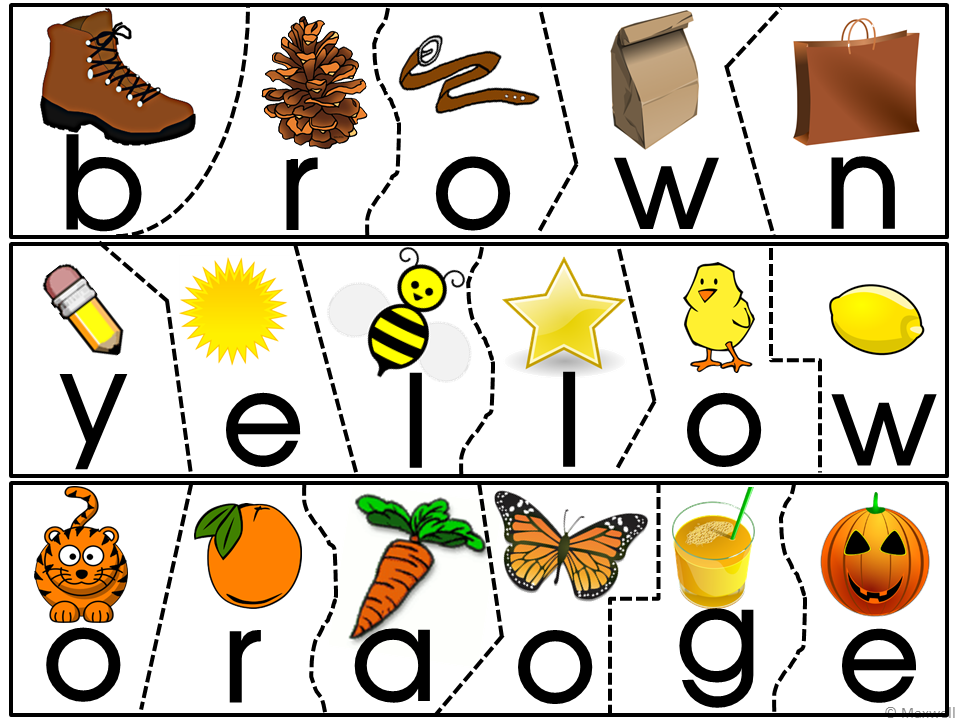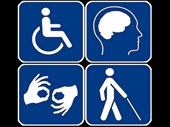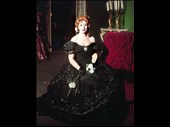Solution for: Learning color words
Answer Table
| 1. iv | 8. meaning |
| 2. i | 9. unhelpful |
| 3. iii | 10. A OR C IN EITHER ORDER |
| 4. vii | 11. A OR C IN EITHER ORDER |
| 5. training trials | 12. C OR D IN EITHER ORDER |
| 6. post-nominal position | 13. C OR D IN EITHER ORDER |
| 7. features |
Exam Review
Learning color words

Young children struggle with color concepts, and the reason for this may have something to do with how we use the words that describe them.
A In the course of the first few years of their lives, children who are brought up in English- speaking homes successfully master the use of hundreds of words. Words for objects, actions, emotions, and many other aspects of the physical world quickly become part of their infant repertoire. For some reason, however, when it comes to learning color words, the same children perform very badly. At the age of four months, babies can distinguish between basic color categories. Yet it turns out they do this in much the same way as blind children. "Blue" and "yellow" appear in older children's expressive language in answer to questions such as "What color is this?", but their mapping of objects to individual colors is haphazard and interchangeable. If shown a blue cup and asked about its color, typical two-year-olds seem as likely to come up with "red" as "blue." Even after hundreds of training trials, children as old as four may still end up being unable to accurately sort objects by color.
B In an effort to work out why this is, cognitive scientists at Stanford University in California hypothesized that children's incompetence at color-word learning may be directly linked to the way these words are used in English. While word order for color adjectives varies, they are used overwhelmingly in pre-nominal position (e.g. "blue cup"); in other words, the adjective comes before the noun it is describing. This is in contrast to post-nominal position (e.g. "The cup is blue") where the adjective comes after the noun. It seems that the difficulty children have may not be caused by any unique property of color, or indeed, of the world. Rather, it may simply come down to the challenge of having to make predictions from color words to the objects they refer to, instead of being able to make predictions from the world of objects to the color words.To illustrate, the word "chair" has a meaning that applies to the somewhat varied set of entities in the world that people use for sitting on. Chairs have features, such as arms and legs and backs, that are combined to some degree in a systematic way; they turn up in a range of chairs of different shapes, sizes, and ages. It could be said that children learn to narrow down the set of cues that make up a chair and in this way they learn the concept associated with that word. On the other hand, color words tend to be unique and not bound to other specific co-occurring features; there is nothing systematic about color words to help cue their meaning. In the speech that adults direct at children, color adjectives occur pre-nominally ("blue cup") around 70 percent of the time. This suggests that most of what children hear from adults will, in fact, be unhelpful in learning what color words refer to.
C To explore this idea further, the research team recruited 41 English children aged between 23 and 29 months and carried out a three- phase experiment. It consisted of a pre-test, followed by training in the use of color words, and finally a post-test that was identical to the pre-test. The pre- and post-test materials comprised six objects that were novel to the children. There were three examples of each object in each of three colors—red, yellow, and blue. The objects were presented on trays, and in both tests, the children were asked to pick out objects in response to requests in which the color word was either a prenominal ("Which is the red one?") or a post-nominal ("Which one is red?").
In the training, the children were introduced to a "magic bucket" containing five sets of items familiar to 26-month-olds (balls, cups, crayons, glasses, and toy bears) in each of the three colors. The training was set up so that half the children were presented with the items one by one and heard them labelled with color words used pre-nominally ("This is a red crayon"), while the other half were introduced to the same items described with a post-nominal color word ("This crayon is red"). After the training, the children repeated the selection task on the unknown items in the post-test. To assess the quality of children's understanding of the color words, and the effect of each type of training, correct choices on items that were consistent across the pre- and post-tests were used to measure children's color knowledge.
D Individual analysis of pre- and post-test data, which confirmed parental vocabulary reports, showed the children had at least some knowledge of the three colour words: they averaged two out of three correct choices in response to both pre- and post-nominal question types, which, it has been pointed out, is better than chance. When children's responses to the question types were assessed independently, performance was at its most consistent when children were both trained and tested on post-nominal adjectives, and worst when trained on pre-nominal adjectives and tested on post-nominal adjectives. Only children who had been trained with post- nominal color-word presentation and then tested with post-nominal question types were significantly more accurate than chance. Comparing the pre- and post-test scores across each condition revealed a significant decline in performance when children were both pre- and post-tested with questions that placed the color words pre-nominally.
As predicted, when children are exposed to color adjectives in post-nominal position, they learn them rapidly (after just five training trials per color); when they are presented with them pre-nominally, as English overwhelmingly tends to do, children show no signs of learning.
Questions 1-4
The Reading Passage has four sections A-D.
Choose the correct heading for each section from the list of headings below.
List of Headings
i A possible explanation
ii Why names of objects are unhelpful
iii Checking out the theory
iv A curious state of affairs
v The need to look at how words are formed
vi How age impacts on learning colours
vii Some unsurprising data
1 Section A
Answer: iv Locate
2 Section B
Answer: i Locate
3 Section C
Answer: iii Locate
4 Section D
Answer: vii Locate
Questions 5-9
Complete the summary below.
Choose NO MORE THAN TWO WORDS from the passage for each answer.
The Hypothesis
Children learn many words quite quickly, but their ability to learn colour words takes longer than expected.
In fact, despite 5 many four-year olds still struggle to arrange objects into colour categories.
Answer: training trials Locate
Scientists have hypothesised that this is due to the 6 of the adjectives in a phrase or sentence and the challenges this presents.
Answer: post-nominal position Locate
While objects consist of a number of 7
Answer: features Locate that can be used to recognise other similar objects, the 8
Answer: meaning Locate of a colour cannot be developed using the same approach. As a consequence, the way colour words tend to be used in English may be 9 to children.
Answer: unhelpful Locate
Questions 10-11
Which TWO of the following statements about the experiment are true?
A The children were unfamiliar with the objects used in the pre- and post-test.
B The children had to place the pre- and post-test objects onto coloured trays.
C The training was conducted by dividing the children into two groups.
D Pre-nominal questions were used less frequently than post-nominal questions in the training.
E The researchers were looking for inconsistencies in children's knowledge ot word order.
10. Answer: A OR C IN EITHER ORDER Locate
11. Answer: A OR C IN EITHER ORDER Locate
Questions 12-13
Which TWO of the following outcomes are reported in the passage?
A Average results contradicted parental assessment of children’s knowledge.
B Children who were post-tested using post-nominal adjectives performed well, regardless of the type of training.
C Greatest levels of improvement were achieved by children who were trained and post-tested using post-nominal adjectives.
D Some children performed less well in the post-test than in the pre-test.
E Some children were unable to accurately name any of the colours in the pre- and post-tests.
12. Answer: C OR D IN EITHER ORDER Locate
13. Answer: C OR D IN EITHER ORDER Locate
Other Tests
-
Total questions: 13
- 4- TRUE-FALSE-NOT GIVEN
- 5- Matching Information
- 4- Sentence Completion
-
Total questions: 13
- 5- TRUE-FALSE-NOT GIVEN
- 4- Matching Information
- 4- Summary, form completion
-
Total questions: 14
- 13- Matching Information
- 1- Sentence Completion
-
Total questions: 13
- 2- Multiple Choice
- 7- Matching Headings
- 4- Sentence Completion
-
Total questions: 14
- 4- YES-NO-NOT GIVEN
- 4- Matching Headings
- 6- Sentence Completion
-
Total questions: 13
- 6- TRUE-FALSE-NOT GIVEN
- 7- Sentence Completion











